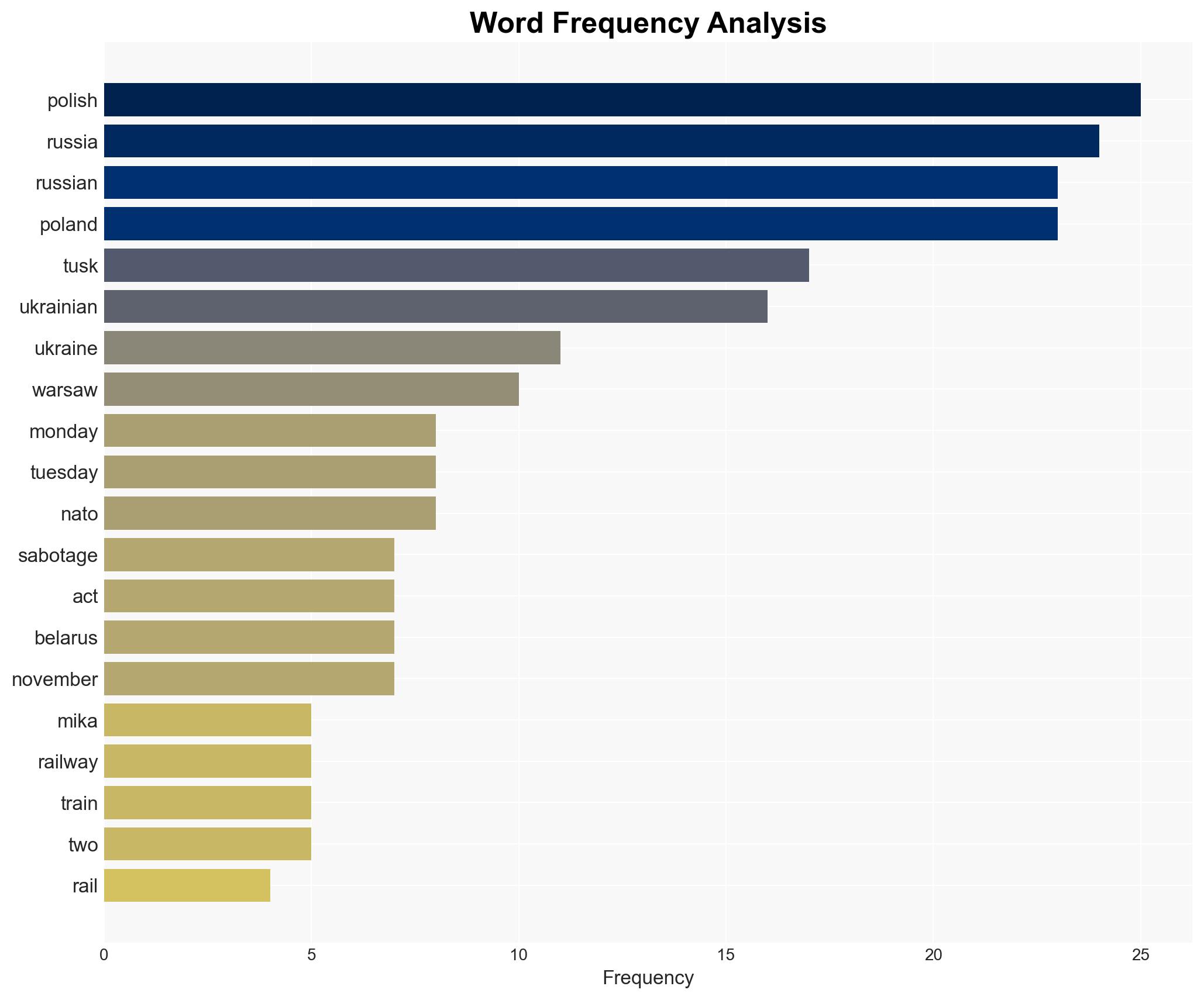Two Ukrainians working for Russia behind rail sabotage Polish PM says – BBC News
Published on: 2025-11-18
AI-powered OSINT brief from verified open sources. Automated NLP signal extraction with human verification. See our Methodology and Why WorldWideWatchers.
Intelligence Report:
1. BLUF (Bottom Line Up Front)
With a moderate confidence level, the most supported hypothesis is that the rail sabotage in Poland was orchestrated by Russian intelligence to destabilize Polish-Ukrainian relations and create internal discord within Poland. Recommended actions include enhancing security measures on critical infrastructure and increasing intelligence sharing among NATO allies.
2. Competing Hypotheses
Hypothesis 1: The sabotage was conducted by Russian intelligence operatives using Ukrainian nationals to create plausible deniability and sow discord between Poland and Ukraine.
Hypothesis 2: The sabotage was an independent operation by Ukrainian nationals with personal or ideological motives, not directly orchestrated by Russian intelligence.
Hypothesis 1 is more likely due to the strategic interests of Russia in destabilizing NATO allies and the historical pattern of using hybrid warfare tactics. The involvement of Ukrainian nationals could be a deliberate attempt to obscure Russian involvement and exacerbate tensions between Poland and Ukraine.
3. Key Assumptions and Red Flags
Assumptions include the belief that Russian intelligence has the capability and motive to conduct such operations. A red flag is the Kremlin’s immediate dismissal of involvement, which could be an indicator of deception. The lack of concrete evidence linking Russian operatives directly to the sabotage raises uncertainty.
4. Implications and Strategic Risks
The incident poses significant risks of escalating tensions between Poland and Ukraine, potentially affecting NATO cohesion. It could also lead to increased anti-Ukrainian sentiment within Poland, impacting the social fabric and political stability. Cyber and informational threats could be amplified as part of a broader hybrid warfare strategy.
5. Recommendations and Outlook
- Enhance surveillance and security protocols on critical infrastructure, particularly rail networks.
- Increase intelligence sharing and coordination with NATO allies to identify and counter hybrid threats.
- Engage in diplomatic efforts to mitigate tensions between Poland and Ukraine.
- Best-case scenario: Strengthened NATO cooperation and improved infrastructure security.
- Worst-case scenario: Escalation of tensions leading to political instability and increased hybrid warfare tactics.
- Most-likely scenario: Continued low-level sabotage attempts with heightened security responses.
6. Key Individuals and Entities
Donald Tusk (Polish Prime Minister), Dmitry Peskov (Russian President’s Spokesman)
7. Thematic Tags
Structured Analytic Techniques Applied
- Cognitive Bias Stress Test: Expose and correct potential biases in assessments through red-teaming and structured challenge.
- Bayesian Scenario Modeling: Use probabilistic forecasting for conflict trajectories or escalation likelihood.
- Network Influence Mapping: Map influence relationships to assess actor impact.
Explore more:
National Security Threats Briefs ·
Daily Summary ·
Support us





